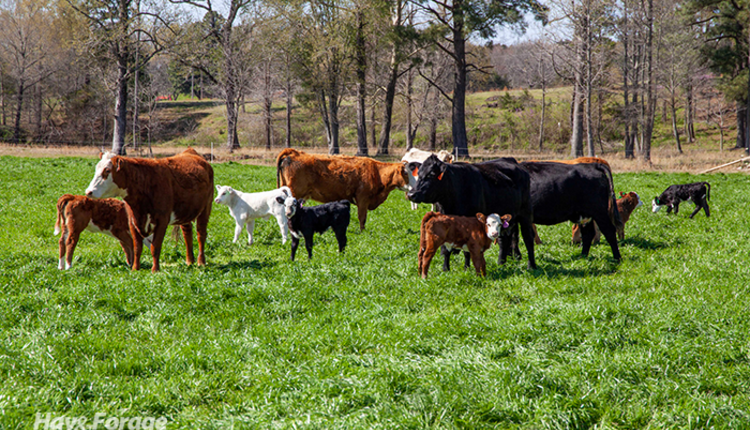
With the front half of February in the rearview mirror, pastures will soon start greening up from south to north. Regardless of where you hang your hat, spring-calving cows on lush pastures demand close attention.
“When cows that have just calved are grazing cool-season annual pastures, we often find mature cows that are in otherwise good condition and health with unusual behaviors, unsteady gait, or the inability to stand up,” writes Paul Beck in Oklahoma State University’s Cow-Calf Corner newsletter. The extension beef cattle nutrition specialist says that these maladies are early signs of grass tetany and milk fever, which are common diseases in adult cows that have recently calved.
Grass tetany is a condition brought on by inadequate magnesium in the diet and inefficient uptake of magnesium from the bone. It is especially prevalent in older cows.
“We often see grass tetany with older cows grazing on small-grain pastures because magnesium is frequently marginal to low and potassium is high in these forages,” Beck explains. “The high potassium interferes with magnesium absorption in the small intestine. Mature, lactating cows are most susceptible because not only is dietary magnesium limited, but these cattle are also losing magnesium through the milk they produce,” he adds.
Supplementing the herd with magnesium is the most common method of preventing grass tetany. This should begin at least one month prior to spring grazing. Beck suggests that mineral supplements have at least 10% to 12% magnesium to mitigate the risk of grass tetany.
A calcium complication
Milk fever is a common metabolic disease in dairy cows but can be an issue in older beef cows as well. The disease often occurs early in lactation and within 72 hours of calving.
“When cows are fed high dietary calcium precalving, the mechanisms for calcium absorption in the intestinal tract become inefficient, minimizing calcium absorption and prioritizing mineral storage in the bone,” Beck explains. “At calving, the cow’s calcium requirement increases due to milk production, but she’s unable to rapidly increase calcium absorption and mobilization of calcium from the bone to maintain blood calcium levels for muscle contraction and nervous system function.”
The beef specialist also points out that there are indications milk fever can be associated with vitamin D deficiency because of its role in calcium metabolism. Vitamin D is naturally produced in the skin when exposed to sunlight ultraviolet waves.
Providing supplemental vitamin D during the winter months is an important consideration because sunlight intensity is not high enough for adequate vitamin D formation and deficiencies may develop, Beck cautions. Avoid feeding high calcium levels during late pregnancy but boost dietary calcium at calving to prevent milk fever.
As soon as grass tetany or milk fever is detected, consult your veterinarian for diagnosis and treatment. Sometimes, the two diseases are hard to differentiate and treat without professional assistance. “A good prevention plan is always the best option,” Beck concludes.

